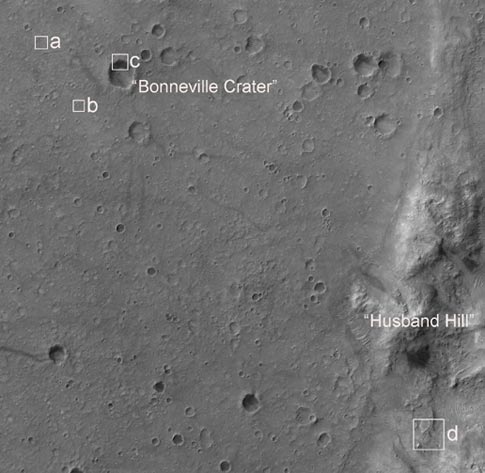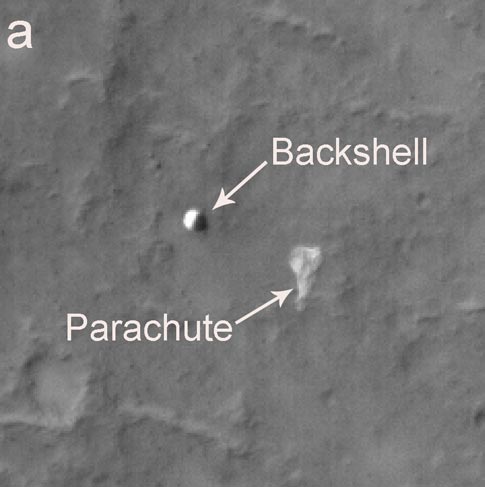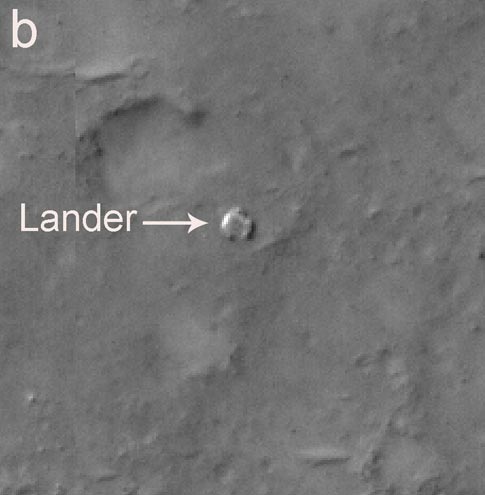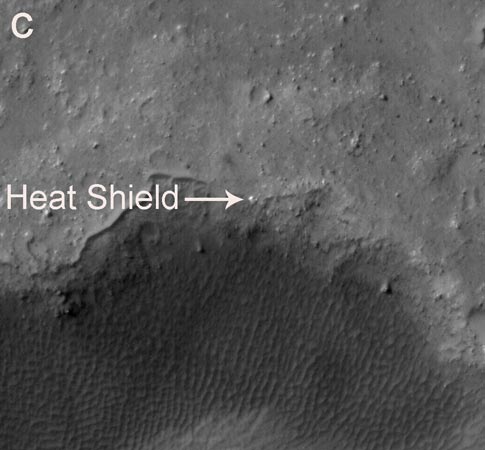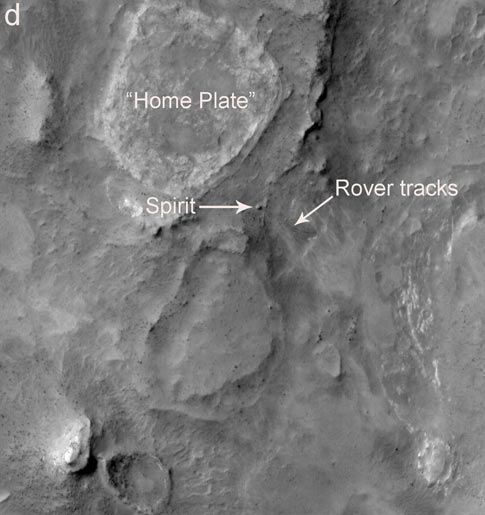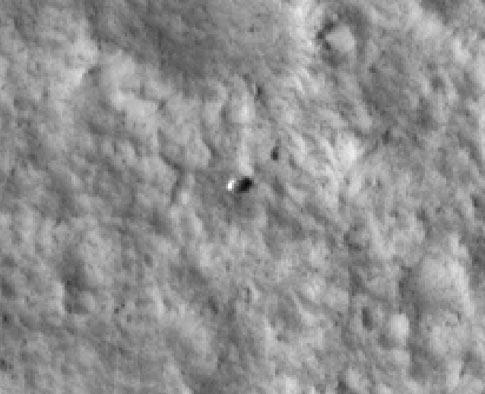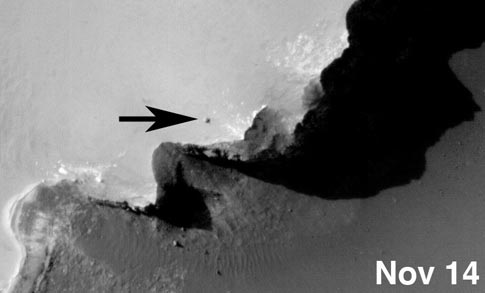New images from NASA’s Mars Reconnaissance Orbiter show three additional NASA spacecraft that have landed on Mars: the Spirit rover active on the surface since January 2004 and the two Viking landers that successfully reached the surface in 1976.
Besides providing new portraits of these robotic emissaries, the images provide scientists valuable high-resolution information about the surrounding terrain at each site. This aids both in interpreting other orbital data and in planning activities for surface missions.
The new images are among the earliest from Mars Reconnaissance Orbiter’s primary science phase, which began in November.
The view of Viking Lander 1 from the high-resolution camera on Mars Reconnaissance Orbiter reveals the spacecraft’s back shell about 260 meters (850 feet) away and the heat shield nearly four times that distant.
The lander returned the first view from the surface of Mars and kept operating for more than six years after its July 20, 1976, landing.
Viking Lander 2, unlike Spirit and Viking Lander 1, had not been detected previously in images from NASA’s Mars Global Surveyor. One feature that had been considered a possibility in an earlier image turned out to be the Viking Lander 2’s back shell, about 400 meters (a quarter mile) from the lander easily discerned in the image from the newer, higher-resolution camera.
NASA made imaging of the Viking Lander 2 site an especially high priority for Mars Reconnaissance Orbiter to help in evaluation of candidate landing sites for NASA’s Phoenix Mars Lander mission, being prepared for launch next summer. Phoenix will land at a far northern site, and the Viking Lander 2 site, though not as high-latitude as where Phoenix will go, is the most comparable site of any seen from the surface of Mars.
The Mars Reconnaissance Orbiter is managed by JPL for NASA’s Science Mission Directorate, Washington. Lockheed Martin Space Systems, Denver, is the prime contractor for the project and built the spacecraft. The High Resolution Imaging Science Experiment is operated by the University of Arizona, and the instrument was built by Ball Aerospace and Technology Corp., Boulder, Colo.

